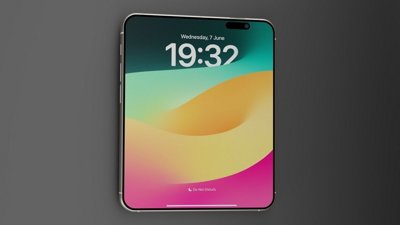Sony just released new wireless earbuds with a donut-like hole in the center. Here's how Sony's open approach compares to Apple's transparency mode found on AirPods Pro.
Open earbuds aren't anything new
While Sony's take here with the LinkBuds may be new, the idea of headphones that provide situational awareness isn't.
There are two categories of earbuds you'll see most frequently.
There are "closed" earbuds that will seal in your ear. This is also called "passive" noise cancellation, as it achieves this noise-canceling by physically blocking off the outside world from your ears.
Then you have "open" earbuds that are just the opposite. They don't seal themselves in your ears. These can be more breathable, but the bass response can be lacking without a good seal.
Some open earbuds use bone conduction for a similar effect. They don't go in your ears at all but rather are placed behind your ears. Bone conduction headphones typically will have the lowest level audio quality of the lot.
There are many reasons why you want to hear your surroundings that are commonplace among users.
Some, who work in an office, want to make sure they can hear if someone says their name. While outside going down the street — be it a casual walk or a workout — you want to know if someone yells or honks at you. And some wearers don't like being cut off from the world around them.
LinkBuds, giving them a try
The LinkBuds themselves are tiny earbuds. They feel like the first "fresh" take on earbuds in a long time.
There are three sections of each earbud. There is a small wing that fits into the ridges of your ear, a bulbous part that houses the driver and battery, then the donut-shaped ring that covers your ear canal.
They are comfortable to wear, giving us no issue with extended wear. The wing is flat, which means it can easily move front to back but not side to side. This is what allows it to fit into your ear comfortably but not fall out.
Sony has exceptional pedigree in the audio space, and audio quality was above what we expected on these open buds. Prior to wear, we assumed audio would take a tremendous because of the open design. Fortunately, that wasn't the case.
You lose some bass because there is no seal, but otherwise, the earbuds sounded great. They were clear with crisp vocals and volume. The tradeoff is that even though the bass is lower, they present a larger soundstage which we tend to prefer.
The microphone quality was also spot-on. Sony managed to do a good job isolating our voice from background sounds while on calls.
Sony's biggest shortcoming is battery life. The LinkBuds have a 5.5-hour battery rating that goes up to 17 combined with the case, which is just average. On a phone call, that battery dropped lower, only yielding about three hours of use.
Open design versus transparency mode
We were most excited to test how the open style of the LinkBuds compared to the transparency mode found on AirPods Pro. Both allow external audio to reach your ears, but they do so in fundamentally different ways.
LinkBuds have a hole that allows sound to reach your eardrums. AirPods Pro uses external microphones to detect audio and play it back on the interior speakers.
After plenty of testing, we almost always preferred the LinkBuds approach. Simply put, LinkBuds let you listen to actually what's around you versus listening to a speaker. Real-life will always sound better than what comes through the speaker.
AirPods Pro also tended to amplify other noises beyond what they were. Scratches or high-pitched noises were uncomfortable to hear with AirPods Pro transparency mode.
That said, LinkBuds had issues too. For example, while waiting at Starbucks, we couldn't listen to our audio very well because the store's music was playing. We felt we were battling the in-store music by turning our volume up.
With AirPods Pro, we have the option to turn off transparency mode or even turn on noise-canceling to better block those external noises.
Everyone's a winner
In this scenario, both earbuds do an excellent job. They're just different jobs. You can't have an open-style earbud while also offering noise cancellation.
If ANC and audio quality are most important, you should look at AirPods Pro or the Sony XM4s, but if you want more awareness and won't use ANC, the LinkBuds are an incredible option.
They have great audio, a unique design, and are much better than any bone conduction headphones we've tried.
Check out our dedicated AirPods Pro price guide for any current deals on Apple's high-end earbuds and you can pick up the Sony LinkBuds on Amazon for $178.
 Andrew O'Hara
Andrew O'Hara










-m.jpg)






 William Gallagher
William Gallagher
 Malcolm Owen
Malcolm Owen
 Bon Adamson
Bon Adamson
 Marko Zivkovic
Marko Zivkovic
 Amber Neely
Amber Neely





-m.jpg)






6 Comments
Tech Moan also reviewed these which surprised me since I am used to him covering vintage stuff.
How much noise do these leak to the person sitting next to you? That’s my big concern and I haven’t seen any reviews address this.
Everyone's a winner? Not if you care about your hearing. The big problem with "open" earbuds like these that also lack noise-cancelling--and these don't even offer the small degree of passive isolation you get from non-NC AirPods--is that you're virtually forced to listen at louder volumes to hear music above the surrounding noise. Obviously not an issue in quiet environments (although sound leakage may be a problem there), but around town and on public transportation? Yeah, no.